Funny pictures for the development of the child's thinking

Who is the easiest?
(illustration from the magazine "Funny Pictures", 1983, №4)
Back in 2004, quite a common story happened to me. Directly from laboratory tables loaded with PCR machines, centrifuges, test tubes and microscopes, in the heat of the heat of writing articles on the bioremediation of saline soils, I got into a room with rattles, little books, and a small child.
The use of rattles and nipples turned out to be more or less simple, but with “developmental games” everything seemed much more interesting. Is it possible to actually enhance the development of mental abilities in a child, and how to do it?
')
To answer this question, I left a career as a scientist and went to work as an additional education teacher. What you read further is the result, sorry, experiments on children (do not worry, no experimental child was hurt).
If the task is to develop thinking, you need to understand what it is.
There are several types of thinking:
1. Verbal-logical thinking . Aristotle figured it out. It relies on our favorite elementary mental operations (analysis, synthesis, comparison, synthesis, abstraction) and elementary conclusions (deduction, induction, analogy (traduction)).
2. Visual and figurative thinking (operating with images).
3. Subject-effective thinking (“hand thinking”, based on the sensory-perceptual process).
4. Creative thinking (the most difficult term, in fact - the ability to make non-standard decisions).
5. Abstract-symbolic (operating with mathematical codes, formulas and operations that cannot be touched or presented).
Therefore, in order to develop a child in the process of entertainment, it is necessary to build in the process of the game the need to solve a problem that is solved with the help of these types of thinking. Fortunately, this turned out to be not so difficult (reflections strongly pushed forward the thick filing of old magazines “Funny Pictures”, which turned out to be the richest material for analyzing the possibilities of using infographics for children).
Since I am a visual myself, the tricks turned out to be visual. They apply to children from 4 years and older (my oldest students, who worked at the techniques, were 18, did not check for adults; a specific age was indicated for specific tasks). These examples are mainly from the field of biology (guess why), but the techniques themselves can be applied to different areas of knowledge. Based on these techniques, we managed to prepare an interactive tour of the city, a theatrical performance, elements of an exhibition on religion, classes in psychology, chemistry and physics.
So, here are the tricks to develop specific types of thinking.
Receptions number 1 and number 2 - "analysis" and "synthesis"
In fact, we need to teach to disassemble the whole into parts and assemble it back (without the appearance of spare parts, it is desirable).
Example: the study of complex natural systems, such as the biogeocenosis of the pond.
The task of the child (6-12 years old): to analyze the community, isolate the ecological relationships and “synthesize” a pond, which in real life will have a chance to function successfully.

In the picture: 1 - general view, 2-5 - constituent elements (2 - laminated herdary of rdest (lamination makes the most fragile herbarium anti-vandal resistant), 3 - laminated images of dragonfly, rdest, 4,5: fastening elements to a magnetic board is carried out by pieces magnetic vinyl on the wrong side). The size of the board is 1200 * 900 mm.
Reception number 3 "comparison"
Example: the evolution of the fore toes of horses.
The task of the child (from 6 years): looking at the picture, to answer how the horse appeared hoof.
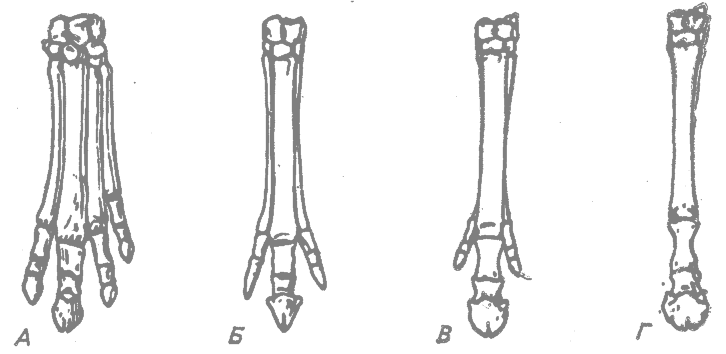
Reception number 4, 5 "generalization", "abstraction"
Example: in natural science there are many options for classifications (living organisms, stars by magnitude, etc.). Such systems provide an excellent opportunity to train the ability of children to generalize (by isolating common signs) and abstraction (from minor attributes).
The task of the child (7-12 years old): independently isolate the signs of fish (lay eggs, cold blood, presence of fins, gills, scales) and draw conditional icons denoting all these signs.

Reception number 6 "deduction"
Thanks to Arthur Conan Doyle, the “Holmes method” became widely known - deductive reasoning from the general to the particular.
Example: this method can be very successfully applied, for example, when playing trackers. The best option for the implementation of this game will be a hike on nature, during which children will be asked to find the maximum number of living creatures in the wake of life: a woodpecker on the anvil, a crow or another bird on the dropped feather, an owl on the left grate, a mouse - by hole, hare - by excrement.
The task of the child (of school age): to determine which lump was bitten by the squirrel, which the woodpecker stoned, and which no one ate.
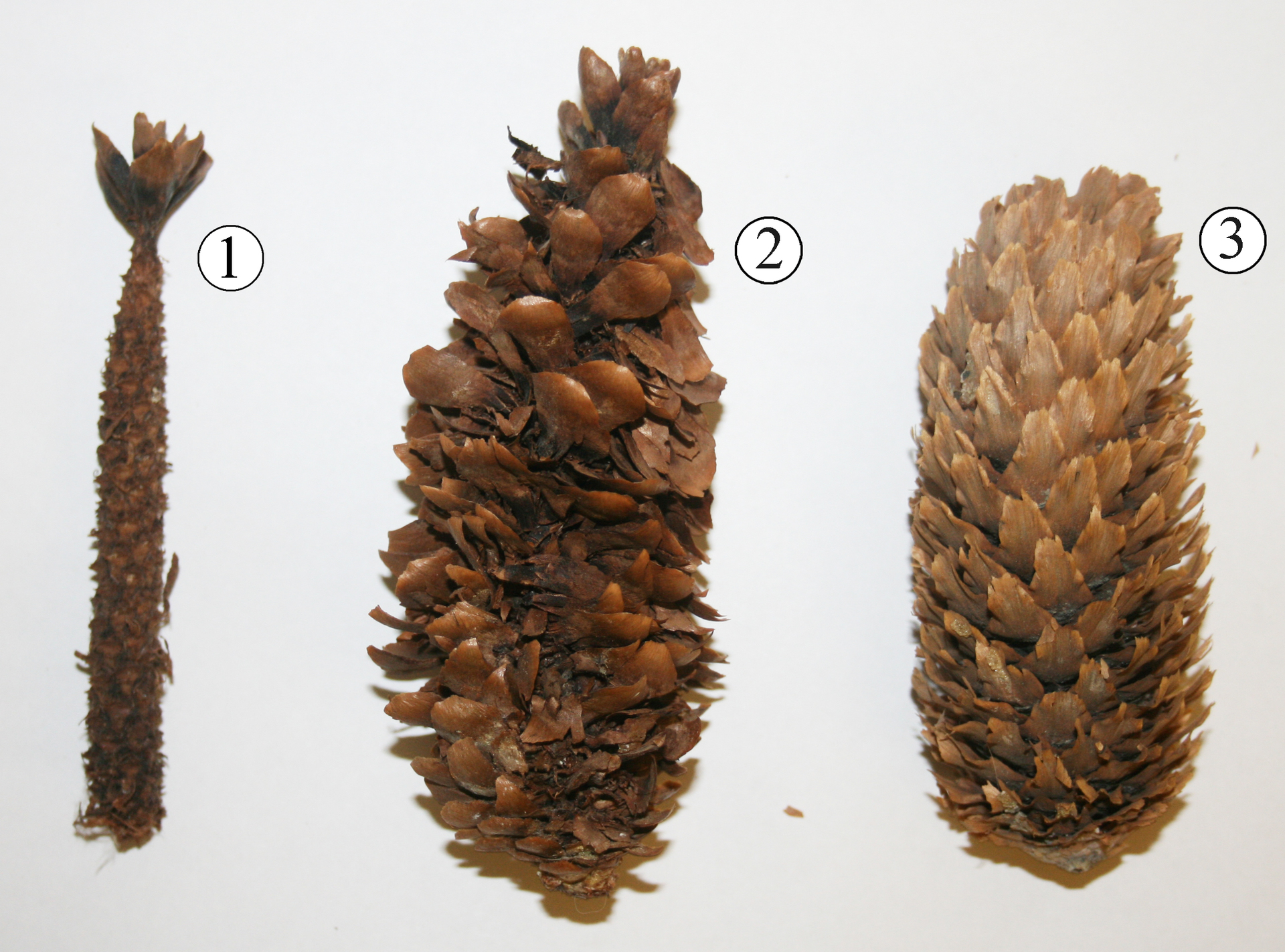
Reception number 7 "induction"
Inductive reasoning is given to children with more difficulty than deductive ones, since they require reasoning from the particular to the general, that is, it practically corresponds to the process of finding new knowledge in the scientific “adult” search. Younger children for the development of this ability can ask the question "What will happen if ...", older - to look for a common cause of two different phenomena.
The task of children (of school age): to determine the general reason for why people are pressed on a roller coaster to the seat, while they are upside down, and why the car is driving at a turn.

Reception number 8 "analogy"
An example of bionics: the history of the invention of the Velcro. It is known that this fastener was invented by the Swiss Georges de Mestral after a regular session of tearing off burdocks from his dog's wool. The fruits of the burdock have “hooks” that are clearly visible to the naked eye, which served as the prototype of the velcro. The invention brought a considerable income: for 30 years of his life, he and his family lived only on royalties for his invention.
Riddle for a child (6-99 +): how to earn a million dollars, carefully looking at the burdock from the garbage.

Techniques number number 9-11 relate to visual-figurative thinking.
Reception number 9 "Association"
An association is a technique that many children like very much.
Example: snowflake shapes (oddly enough, snowflake shapes have both names and classifications).
The task of children (from 5 years old): looking at the snowflakes, guess what their name is (in the illustration to the left is a column, to the right is a coil).

Reception number 10 "emphasis"
Fortunately, the lack of use of this technique in textbooks is not observed, for example, when a system of organs is highlighted in color and depicted on the black and white contour of the human body. In this case, the contour of the body is needed for a topographic assessment of the location of the system of organs, and color - focuses attention. However, merely highlighting is not enough to perplex a child.
The task for children from 6 years: coloring the outline image of the human body with colored pencils.
Reception number 11 "agglutination"
It means “bonding”, so if we see, for example, the ancient chimera — the Centaur, the Unicorn, the Basilisk, and others — then we owe their appearance precisely to the ability of the human brain to connect the parts that were not originally connected. It is possible to apply this technique as very simply - by proposing that children create or “disassemble” into components of chimeras, as well as in solving complex problems.
The task for children from 4 years old: to determine which mythical animal can be collected from the proposed parts and which real animals all these parts belong to.
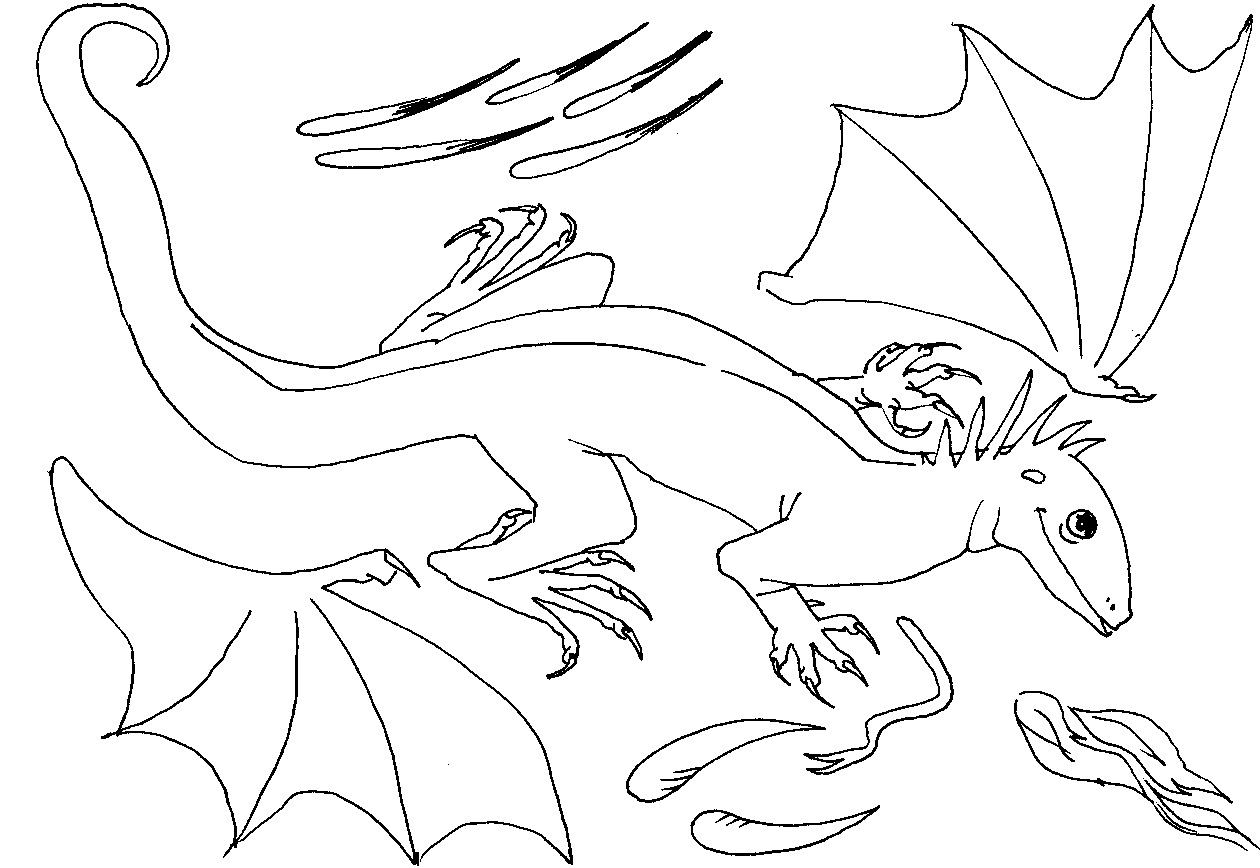
School tasks contain, as a rule, clear initial conditions that do not allow misunderstandings and do not contain errors or incompleteness of the initial data. In life, this happens rarely. To better prepare the child for life in the real world, it is useful to use techniques that require the use of intuition, the very “creative thinking”. Intuition allows you to overcome the incompleteness or inaccuracy of the original data. These techniques include “error”, “search” and “space” (receptions number 12-14).
Reception number 12 "error"
It involves the conscious introduction of an error in your speech or in the proposed illustration (“what did the artist confuse in the picture?). Apply this technique should be very careful. You should not enter an error with the words “now I will show you how to do / speak / draw incorrectly” - this approach will ensure incorrect memorization of information. During the use of the reception, it is best to explain to the children in advance that the proposed information contains an error, but its search is the task of the children.
The task of children (from 3 years): “What is the artist confused?” (Which tops are suitable for a carrot). Illustration from the magazine "Funny Pictures", 1984, №9.
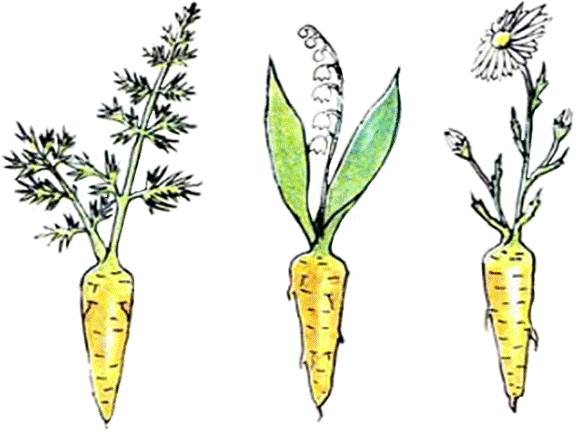
Reception number 13 "Search"
The task of children (4-99 +): to find a living creature in the photo (hint: it is almost in the floor of the photo).

Reception number 14 "space"
Example: a natural example of incomplete information is the starry sky. The stars are not interconnected by lines in the constellations, at the same time, the human imagination "draws" them without difficulty.
The task of children (from 6 years of age): independently connect the stars in the starry sky into constellations, using their knowledge or after a brief demonstration of the “correct” version.

Lyrical digression
Here I like to make fun of children and invite them to find the constellation of Orion, for example, here:

Found? He is there, by the way, the truth is (thanks to Photoshop). In fact, this is the result of the work of cave mushroom mosquitoes, which weave such trapping nets (as a result, children remember both mosquitoes and the Orion constellation):
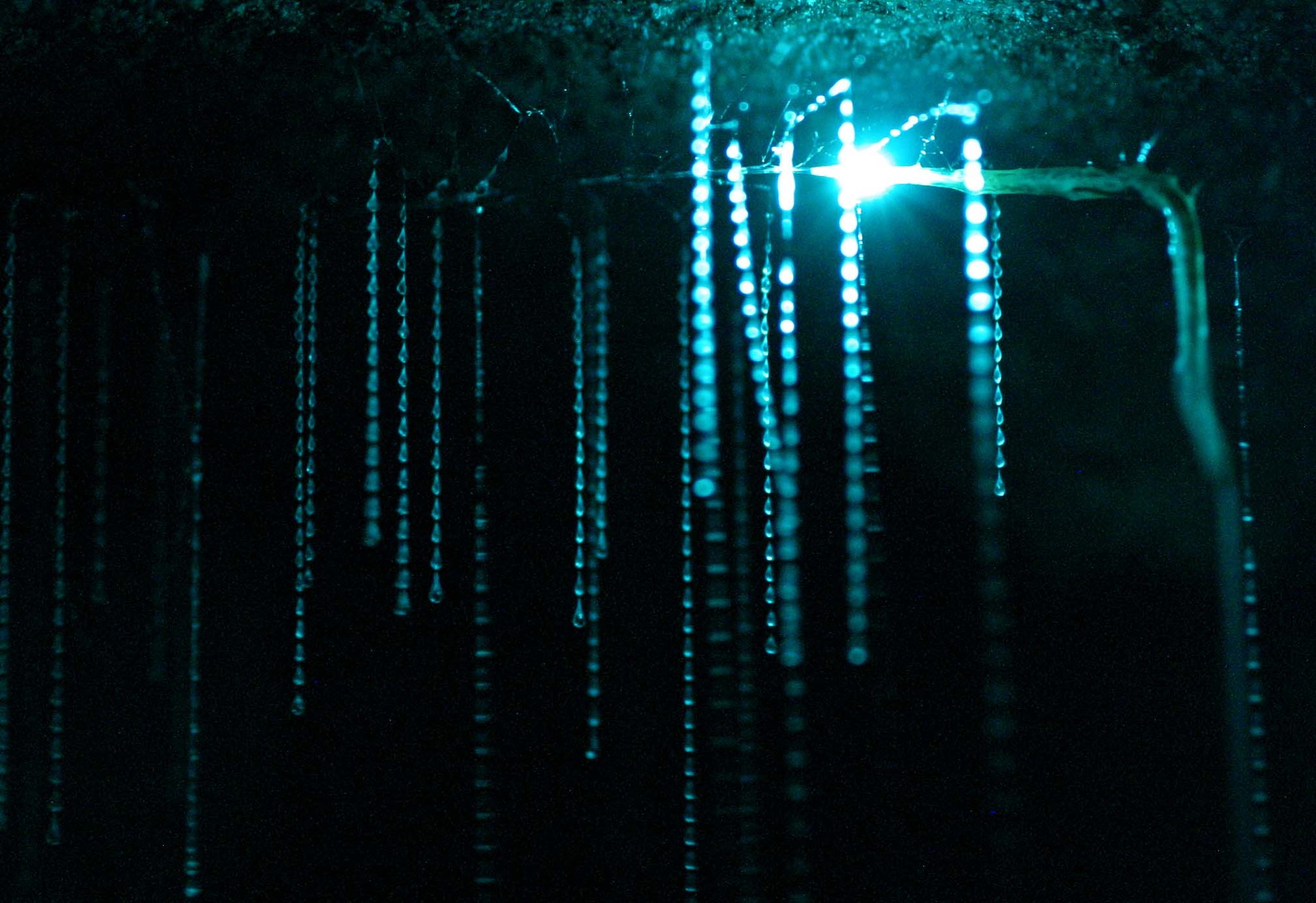
And, finally, subject-effective thinking (method No. 15).
Reception number 15 "organoleptic"
For many people, the opportunity to touch, smell, touch or lick something is not associated with the notion of “thinking”. Nevertheless, Zabrodin Mikhail Yuryevich developed a theory of the sensory-perceptual process, according to which the process of signal perception is associated with the decision-making process. At the macro level - is the knowledge of the subject through the manipulation of it.
A lot of examples can provide any museum of entertaining physics. Rubbing with amber on wool, you can demonstrate the appearance of electricity. An electrical discharge leads to the appearance of ozone, which can be felt with the help of a characteristic odor. The human body is also a conductor of electricity; it can be felt with the tongue by attaching the battery contacts to it. Electricity can also be felt to the touch, for example, wearing and removing a synthetic fiber sweater.
Unfortunately, it was not possible for me, the despicable visual, to come up with any tricks how to develop abstract-symbolic thinking in children. So dear fathers and moms-programmers, I will be glad if you share your thoughts on this matter. At least, it is not possible to develop it with funny pictures because of the contradiction with the definition of the term.
Of course, all of these techniques do not necessarily use separately. They can and should be combined. The result of this combination is a game about infectious diseases “Beware, microbes!” (You can download and share your thoughts on the game in particular and attempts to combine the game and training in general).
As I said, I had students of very different ages. I can tell statistics only for high school students, because only with them was it possible to organize a more or less representative sample and control group. Details of calculations and graphs can be found here . In short, the conclusion is unambiguous: the ability of the students in the experimental group to solve problems increased in a variety of ways compared to the control group. Ten years of observation of younger children also indicate that positive changes are occurring (but, unfortunately, I can’t give statistics in the absence of a control group). That is, it is possible to develop thinking, and the techniques proposed in the article are suitable for this.
Finally - a little advice, how to make sure that you do not run after your child, trying to feed him with chewed information, and he ran after you, demanding "dad / mom, come on again!". Run away from him! Hide the information. Make her a reward. As George Martin said in the Game of Thrones book, “when one person builds a wall, another must immediately know what is on the other side.” It is necessary to surround the educational information with an aura of riddles, create obstacles to its extraction, to surprise - children have an interest, a desire to achieve results. Why all? Because for almost the entire history of mankind, only curious boys and girls survived while papa ran after the mammoth, and mum swept poisonous spiders out of the cave. Believe me, I did not see the children in whom this ancient curiosity died. But why some people have hidden it so far that it is impossible to find it - this is a completely, completely different story.
Source: https://habr.com/ru/post/402765/
All Articles